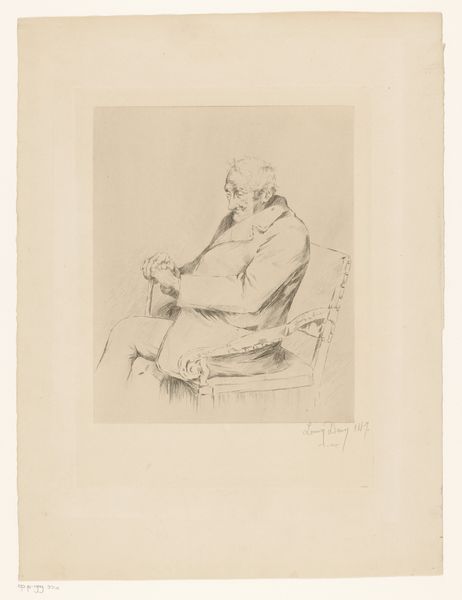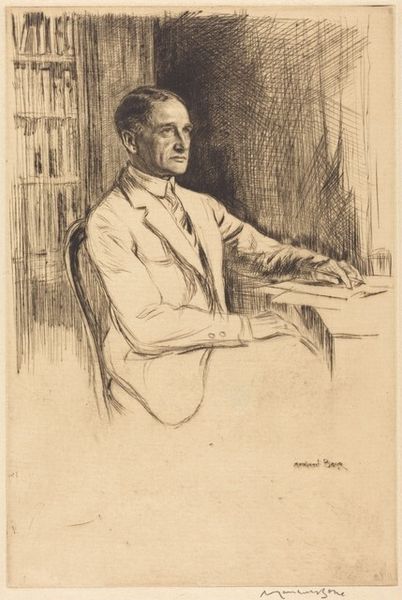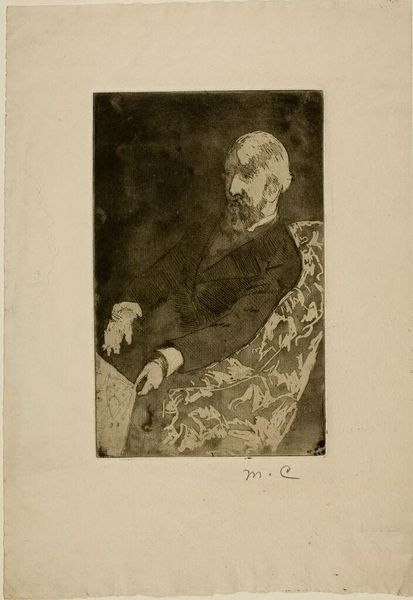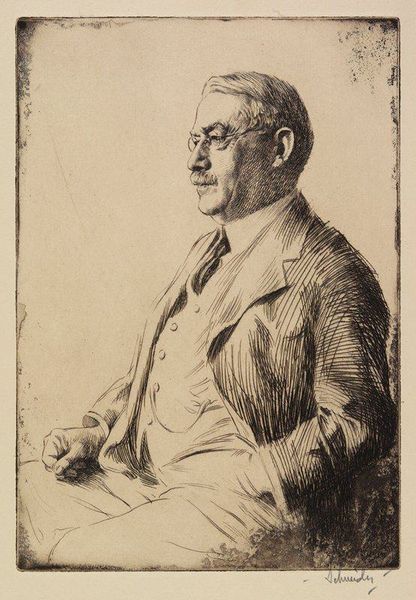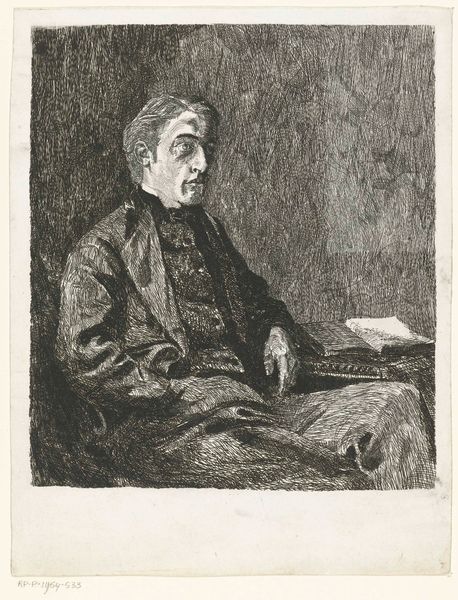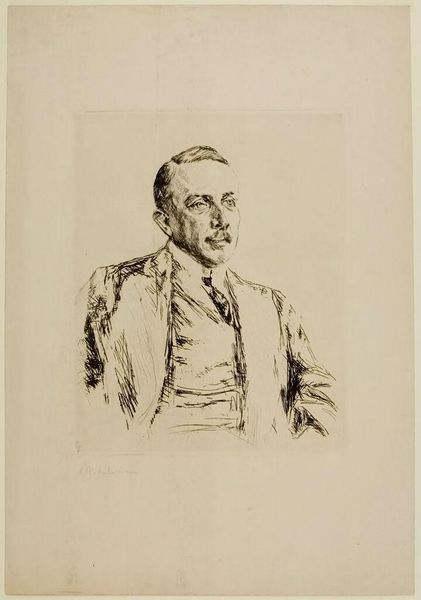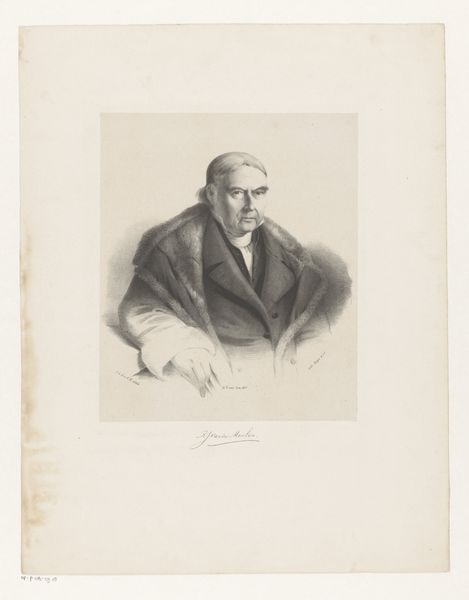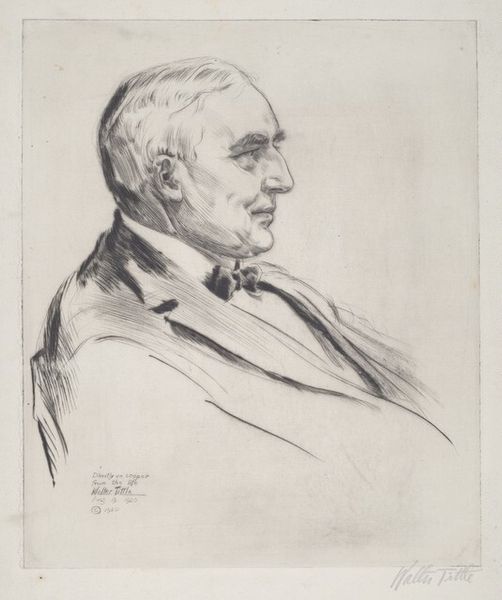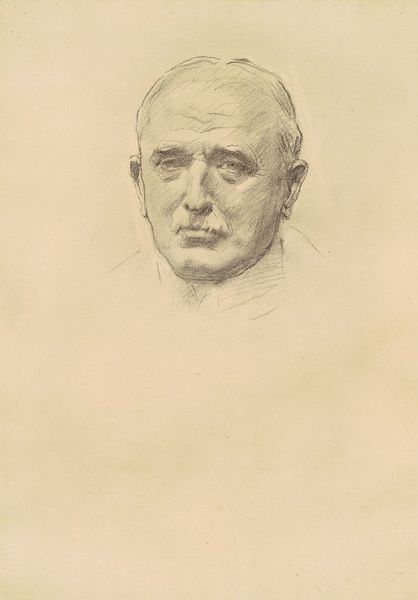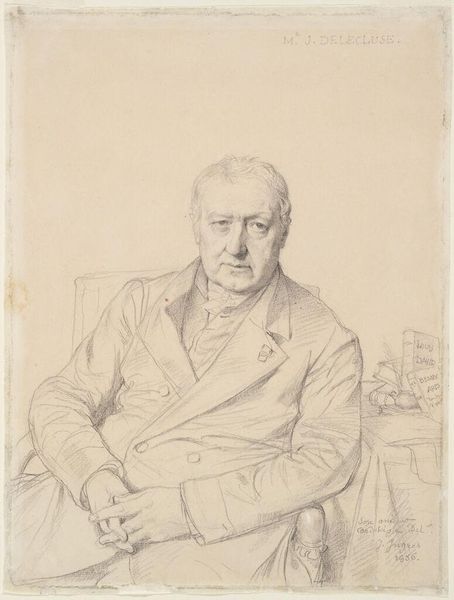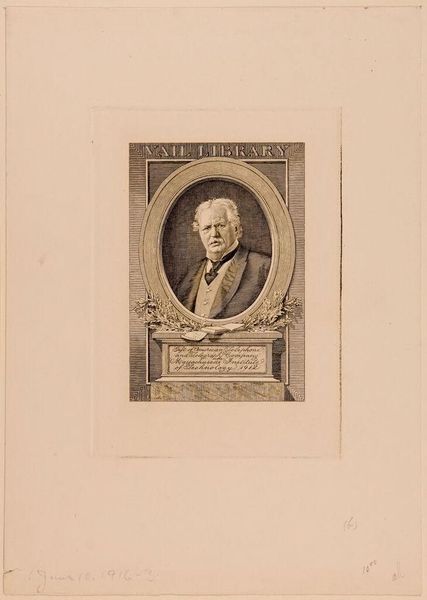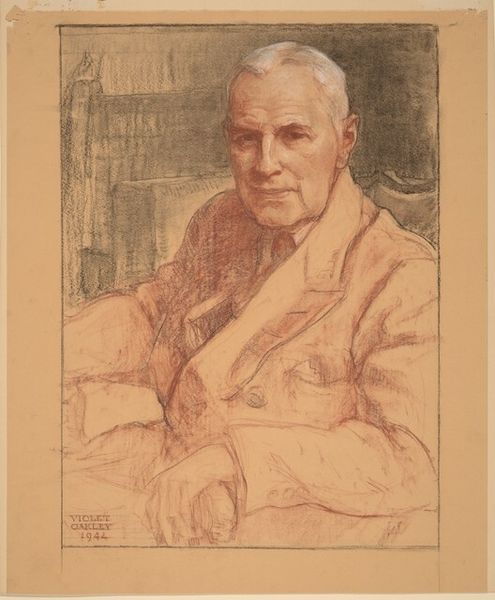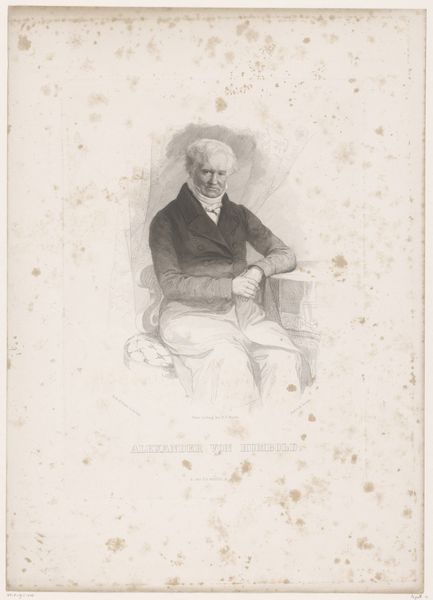
print, etching
#
portrait
#
pencil drawn
# print
#
etching
#
pencil drawing
#
realism
Copyright: National Gallery of Art: CC0 1.0
Editor: Here we have Alexander Stern's etching, "F.W. Goudy," from 1938. It's a striking portrait, and the meticulous linework gives it a really intimate, almost photographic quality. How would you unpack this piece, looking at its context? Curator: Considering the means of production, etching as a process allows for mass reproducibility. Think about the implications for accessibility of portraiture during the late 1930s. Rather than an oil painting commissioned by the sitter, here is an etched portrait; more affordable materials mean more affordable art for a broader audience. It speaks volumes about the evolving social standing of portraiture. What is being captured? Editor: So it's about making images of prominent people available? To be consumed as an object? I see the sitter is also sitting in front of what seems to be shelves of books, presumably made with the same printing technology, since F.W. Goudy was an accomplished typographer. Curator: Exactly! The materiality extends beyond just the etching itself. The subject, Goudy, was himself involved with production, creating fonts, physically involved with industrial reproduction of written materials, something this portrait makes note of. Editor: Fascinating. I guess I hadn’t thought about the link between the *making* of the portrait and the sitter *being* a maker of other printed goods. Curator: Yes, it raises some questions. Was Stern commenting on the rise of accessible art forms alongside mass-produced textual information? Or was he celebrating Goudy’s craft? What purpose did that type of artistic skill represent in this moment in history? These questions are critical. Editor: It's interesting to think about art not just as an aesthetic object, but as part of a broader system of production and accessibility of information. Thank you. Curator: And thinking of materiality we can be conscious of our own complicity as consumers in the process, bringing our contemporary relationship to production of material back into view. A very important takeaway.
Comments
No comments
Be the first to comment and join the conversation on the ultimate creative platform.
